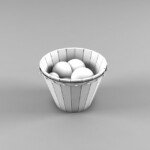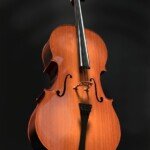Precise plasma cutting explains: Engines for modern metal manufacturing (why is crucial to your project)
Metal manufacturing has evolved dramatically since the days of oxygen fuel torches and manual processing. Today, at the forefront of plastic shaping metals, plates and structural composition is a technology cherished for its speed, versatility and excellent accuracy: CNC plasma cutting. As a leader in advanced five-axis CNC machining, Gremphild takes this technology as a fundamental process, often the first step in producing complex, high-quality parts. Let’s dig deeper into what precise plasma cutting really requires.
Beyond the Basics: The Science of Plasma Arcs
The core of plasma cleavage utilizes the fourth state of matter: plasma. Unlike solids, liquids, or gases, plasma is an overheated ionic gas. The precision plasma cutting system generates the plasma within a tightly controlled torch head.
- Ionization and arc formation: High pressure sparks are forced to ionize inert gases (such as nitrogen, argon or compressed air) through narrow nozzles. This converts the gas into a plasma conduit that is capable of conducting electrically. A pilot arc was established.
- Arc transfer and cutting: This pilot arc is transferred to the conductive workpiece (cathode), forming a very hot cut arc (to a temperature of 20,000°C/36,000°F!).
- Cutting itself: The focused plasma jet melts the metal at the contact point. Meanwhile, high-speed airflow (usually the same plasma gas or secondary) "shield" Gas) drives molten metal out of KERF (cutting path), resulting in a clean separation.
- CNC precise guidance: The entire plasma torch is installed on a computer numerical control (CNC) gantry system. This complex system reads digital design files (e.g., converts CAD drawings to G codes) and indicates the torch path with extremely high accuracy, allowing for complex shearing and repeatable geometry.
What makes it a reality "accurate" Plasma cleavage?
Not all plasma cleavages are equal. Distinguishing precision plasma systems from basic handheld units lies in several key technological advances:
- Refined torch design: Precision flares have complex nozzle and electrode designs, usually using functions such as rotating gas. A key innovation is "Hypertherm hafe" Technology (HD, exquisite functional cutting) – or its features with other manufacturers’ features. This involves a shield cup design that extremely shrinks the arc as it exits the nozzle and controls the secondary airflow with special precision, thereby:
- Sharp, square edge: The edge taper is reduced (bevel angle) compared to conventional plasma.
- Narrower engraving: Less material is evaporated/wasteful, making nested parts more tight and detailed.
- Reduce heat-affected zone (HAZ): The area where cutting heat is minimized changes the metallurgical properties of the metal near the cutting edge.
- Smooth surface: Requires less post-processing time and effort.
- Stricter tolerances: Ability to hit tolerance consistently ±0.15 mm to ±0.5 mm (±0.006" To ±0.020") Depends on material, thickness and complexity of the system controller.
- Advanced CNC control and automation: High-end CNC systems optimize cutting paths, based on material thickness and cutting characteristics, dynamically adjusting the ampere and feed rate during the cutting process (High Control-THC). This ensures consistent arc voltage and optimal shear quality throughout the section.
- Optimize gases: Precise cutting requires specific high-purity gases or gas mixtures other than simple compressed air. Nitrogen, oxygen and hydrogen mixtures (H35) are selected based on material type to maximize mass and minimize drip formation (molecule metal recures at the cutting edge). Effective smoke extraction is mandatory.
- Pierce Control & Cut Sequencing: The software prevents “splashing” during Pierce (initial breakthrough) and cleverly cuts the sequences to minimize heat buildup distortion.
Key features and benefits
Precision plasma cutting is excellent in many production scenarios:
- Material versatility: Cut a wide range of Conductive Metals: carbon steel alloy, stainless steel, aluminum, copper, brass, etc.
- Thickness range: Highly capable Thin gauge table (0.5mm / 0.02") arrive Board over 50mm / 2 inches. The optimal accuracy is usually the highest in the range of 1-25mm.
- Speed and efficiency: Technologies such as thicker parts (especially carbon steel), such as oxygen fuel, water coats or lasers, can significantly increase throughput and reduce costs.
- Complex geometric shapes: Effortlessly generates complex internal functions (holes, slots, detailed profiles) and complex 2D configuration files determined by CAD files that cannot be copied manually.
- Scalability: Ideal for prototype operation and mass production.
- One-stop potential: Provides major cutting solutions for finished parts requiring secondary operation – It’s where Greatlight’s total solution shines.
Understanding limitations: There are boundaries of accuracy
Despite its capabilities, laser and water clip reduction offers specific advantages:
- Edge finish and HAZ: Although greatly improved, precise plasma rarely equals the near-primitive edge of the laser or water clamp and has minimal danger, especially on thinner materials and non-productive metals. For cosmetic finishes, some post-treatment (sanding, grinding) may be required.
- Critical accuracy requirements: For features requiring tolerances of ±0.1 mm (±0.004)"), water clips or lasers may be more suitable.
- Material Limitation: Non-conductive materials (plastics, wood) are not effectively cut. Some reflective metals such as copper can be challenging without specific equipment/gases.
- Hot considerations: The heat input of concentrated heat can cause deformation of thin materials or dense nested patterns. Elaborate CNC programming minimizes, but does not eliminate this risk.
Why Greatlight Leverage Precision Colasma gets five-axis success
On Greatlight, precise plasma cutting is not only a standalone service. This is an important input to our advanced manufacturing ecosystem. Here is the synergy:
- Effective blank production: Plasma quickly cuts near mesh or net blanks from the plate or plate for complex five-axis machining parts, minimizing raw material waste and lathe/mill processing time.
- Complex pre-authorization: Create complex key paths, anchor points, or gap paths on the board forward Multi-axis machining greatly improves machining efficiency.
- Structural composition: Precisely cut brackets, mounting plates and frames, destined to be integrated into larger components or require subsequent machining pockets/holes.
- Complementary process: When the requirements are finally completed, Greatlight seamlessly transitions plasma cutting components to our five-axis machining center for critical edge finishing, interface machining, tapping and other high-precision operations. We also handle all necessary Post-processing and completion (burr, cleaning, grinding, sand blue, powder coating, anodizing, etc.) Interior.
- Cost Optimization: For projects where there is no reason for major profile cutting (especially in thicker materials), plasma provides a special balance of accuracy and affordability, providing a budget for critical five-axis machining operations.
in conclusion
Precise plasma cutting is not just through metal slices. It represents a complex integration of plasma physics, automated CNC control, cutting-edge torch technology and materials science to provide speed, flexibility and significant dimensional accuracy. When lasers and water clips occupy high-precision wall ni, precise plasma remains the undisputed main force for fast, cost-effective manufacturing, especially within 2mm to 50mm (0.08 (0.08)" To 2") A variety of materials are found throughout.
At Greatlight, we strategically cut precise plasma into our manufacturing workflows, leveraging its advantages for effective blank preparation and complex analysis. Combining our advanced five-axis CNC machining capabilities and comprehensive post-processing services, we provide a truly one-stop solution for converting your metal parts design into high-quality, precise engineering reality. We quickly process most materials and customize solutions specifically to your needs to ensure you get Best value without compromising quality. Contact Greatlight today to discuss how our precision metal manufacturing expertise can start with the power of plasma – how to solve your manufacturing challenges. Customize your precision parts now!
FAQs for Precision Plasma Cutting
Q: Can plasma cutting be really obtained?
A: With the help of modern high-definition systems, precise plasma reliably achieves tolerances. ±0.15 mm (±0.006") to ±0.5 mm (±0.020") in appropriate materials and thickness. Edge convenience is greatly improved, although not always equal to a laser or water clip on thin materials. Consistency is key.
Q: Can plasma cutting be used on stainless steel and aluminum?
Answer: Absolutely! Precise plasma excels in cutting stainless steel and aluminum. High-quality results often require specific gas mixtures (e.g., nitrogen or hydrogen mixtures for stainless steel; aluminum alcohol is used for aluminum) and optimal cutting parameters to prevent excessive dripping or oxidation. We process all kinds of alloys every day.
Q: Air plasma and "Accuracy/HD" plasma?
A: Air plasma uses store air as plasma and cutting/shielding gas. It is common for handheld devices and offers a lower quality. Precision/HD systems use higher quality, usually purified/inert gases, advanced torch technology for arc shrinkage (e.g., HAFE design) and complex CNC control, resulting in significantly better quality reduction, tolerances and edge effects.
Q: Does precision plasma require too much to complete?
A: Edge finish is better than standard plasma. While lasers may still be smoother, precision plasma edges are usually clean and can be used in many functional applications. The smallest drops are expected to form. Some applications may benefit from light hair or edge grinding for specific cosmetic or mating requirements – the service is available in-house.
Q: Is plasma cutting faster than laser or water clips?
one: Usually, yes, usually significant, Especially on the thickness of low carbon steel above 10mm (about 3/8") and up to 50mm (2") and later. Water clips are slower in nature. Fiber lasers are very fast on thin plates, but compared to plasma, the fiber advantages lose the advantage of speed on low carbon steels with thicker fiber advantages. Plasma provides the best velocity to velocity ratio for many thicker materials.
Q: What causes the bevel angle of plasma cutting?
A: Some bevels (tapers) are inherent in the plasma process, which is due to the shape of the arc when it leaves the nozzle and the external force of the gas. Precision plasma torches are specially designed for use in Minimize and control This slope obtains many square edges than traditional plasma. This situation is further mitigated by high-precision technology for Greatlight.
Q: Can Greatlight handle the entire process from plasma cutting to finished parts?
one: Absolutely! This is our core strength. We use precision plasma for efficient cutting. The components then seamlessly pass through our advanced five-axis CNC machining center for critical dimensional features, drilling, tapping and final edge finishes. We also offer a comprehensive aftertreatment – cleaning, burrs, grinding, sand blue and a variety of paint/finishing options – ready-made parts from a trusted supplier. Get your custom precision parts now!

















